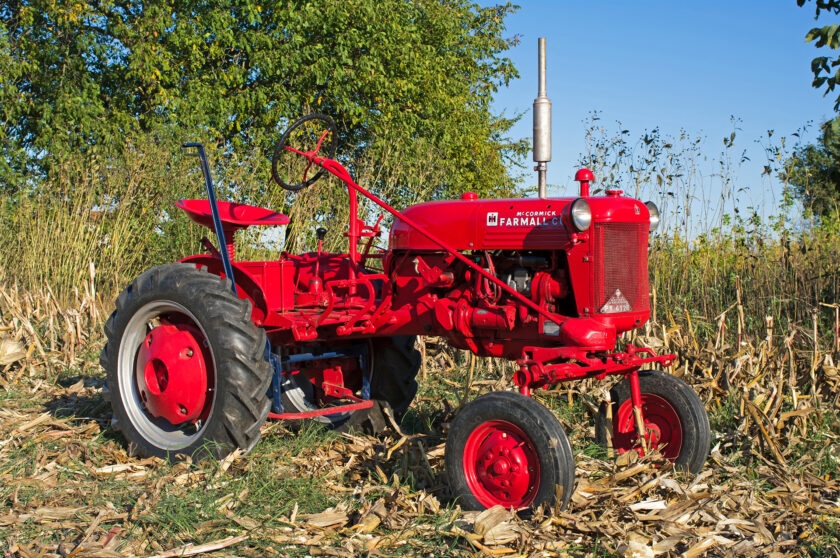Direct descendant of a tractor excellence born in the United States in the 1920s, the Case Ih " Farmall " range now proposes in a modern and updated key, all the prerogatives that made the homonymous tractors produced by International Harvester since 1923 real and their own legends on both sides of the Atlantic Ocean. Solidity, manageability and low consumption in the first place, qualities that have never sacrificed performance and that Case Ih has accentuated from generation to generation, arriving today to offer tractors characterized by absolutely competitive quality / price / content ratios. An aspect, the latter, which often makes the difference when an operator has to decide on the purchase of a tractor and which on the “ Farmall”Of more recent design has been declined by differentiating the offer according to specific operational needs.
In fact, there are two product lines, "A" and "C", with the first which, based on the engine architectures, three or four cylinders, is in turn divided into two families of machines whose mission profiles are differentiated by size , masses, performances and contents.
The “ Farmall A"55, 65 and 75 horsepower, three strong vehicles of a modern design under which there is a great constructive simplicity, such as to allow them to be managed even by personnel undergoing training and ideal in case the machines are destined to the rental.
Basic tractors then, but with all the typical features of the most current machines, starting with the two-liter, 900 cubic centimeter three-cylinder FPT Industrial engines, which are supercharged by a turbo / intercooler system that supports a high-pressure common rail system. Stage V emitted through latest generation egr systems, external and therefore refrigerated, the engines deliver their maximum calibrations at one thousand 900 rpm, so as to ensure linear and progressive torque curves that contribute to reducing fuel consumption.
READ MORE- Tractors can change farming in good ways and bad: lessons from four African countries
Also equipped with Fpt Industrial engines, but in this case in a four-cylinder architecture that gives life to a cubic capacity of three liters and 400 cubic centimeters, they offer maximum powers ranging from 86 to 114 horsepower and maximum torque between 351 and 457 newtonmeter, always and in any case delivered at one thousand 500 revolutions and therefore harbingers of reduced energy absorption.
Common to all " Farmall A " models instead is the standard presence of a synchronized mechanical transmission with three ranges and four gears which provides 12 forward ratios and the same number in the rear, a group that can be integrated optionally with an electro-hydraulic reverse shuttle and with a creeper operating on the two low ranges which raises the available speeds to 20 + 12.
 The first "Farmalls" were born in 1923, just after the First World War, when the designers of the International Harvester Company, in the United States, began to develop a light and versatile tractor capable of meeting the mechanization needs of American agriculture, to that time still largely familiar. The objective was fully achieved and together with the low purchase and operating costs made the machines successful, allowing them to experience the years that separated the First World War from the Second as protagonists. Shortly before this last conflict, International Harvester decided to completely overhaul its “Farmalls”, renewing their design and starting a long series of technical upgrades that involved engines, power take-offs and transmissions.
The first "Farmalls" were born in 1923, just after the First World War, when the designers of the International Harvester Company, in the United States, began to develop a light and versatile tractor capable of meeting the mechanization needs of American agriculture, to that time still largely familiar. The objective was fully achieved and together with the low purchase and operating costs made the machines successful, allowing them to experience the years that separated the First World War from the Second as protagonists. Shortly before this last conflict, International Harvester decided to completely overhaul its “Farmalls”, renewing their design and starting a long series of technical upgrades that involved engines, power take-offs and transmissions.
This made the range proliferate to the point of forcing the House to identify the various versions using letters of the alphabet. The abbreviations "Cub", "A", "B", "C", "H" and "M" thus became famous among farmers all over the world, thanks to the fact that in the meantime International Harvester began producing the "Farmall ”Also in Mexico, Great Britain, Germany, Australia and France. The 12 horsepower “Farmall Cub” version thus became very popular among the small farms of the Old Continent, while the “H” and “M” models found their place in the larger ones. Despite the strong commercial success, the entire “Farmall” range left the scene in the first decade after the Second World War when production was interrupted due to the vicissitudes that involved the brand.
READ THE FULL ARTICLE ON THE LINK ABOVE













